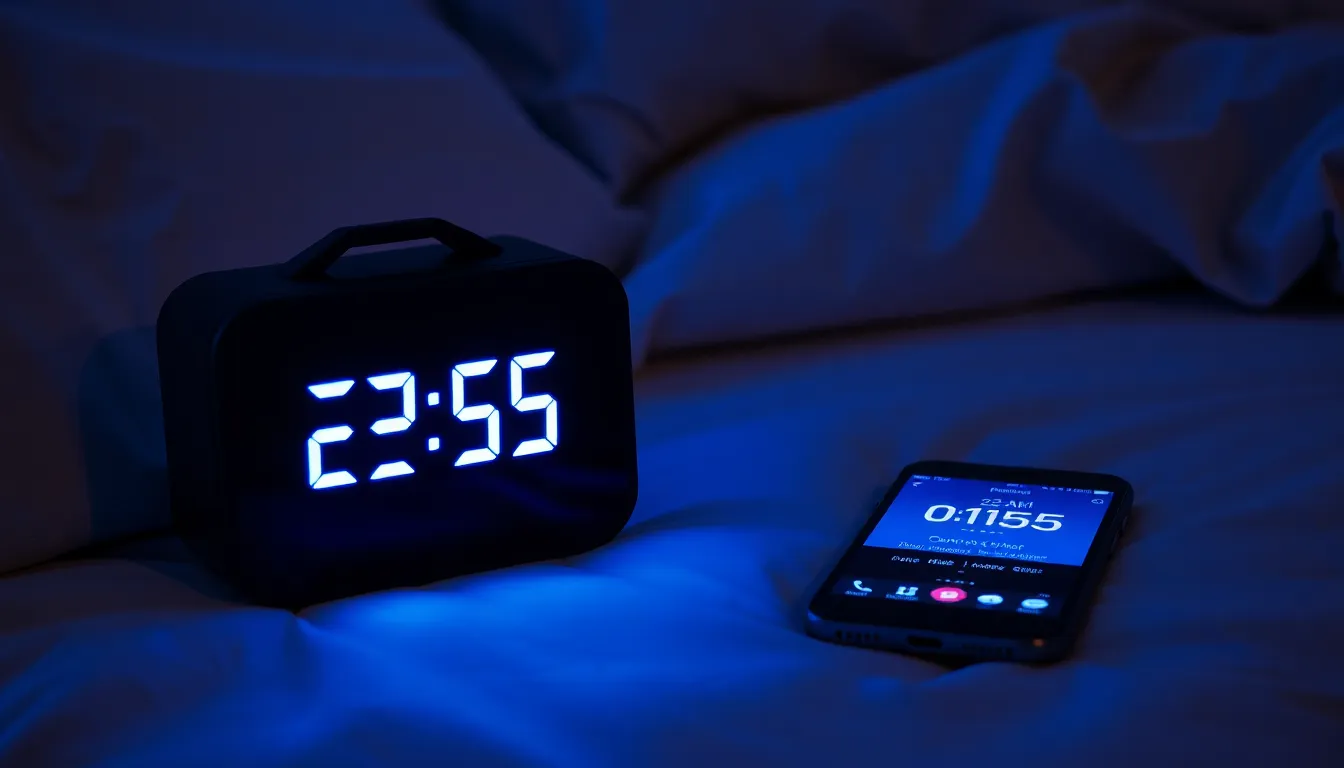As the clock ticks away, the question arises—how many hours until 3 AM? Whether it’s late-night study sessions, binge-watching that new series, or simply pondering life’s greatest mysteries, time has a sneaky way of slipping through our fingers. Knowing how long you’ve got until the witching hour can be crucial, especially if you’re trying to avoid turning into a pumpkin.
Table of Contents
ToggleUnderstanding Time Calculation
Understanding how to calculate the time until 3 AM is essential for managing daily activities effectively. Recognizing the nuances of time can help individuals anticipate deadlines and prevent losing track of their schedules.
The Concept of Time Zones
Time zones play a crucial role in determining the exact time in different regions. Each zone represents a specific offset from Coordinated Universal Time (UTC). For example, Eastern Standard Time (EST) is UTC-5, while Pacific Standard Time (PST) is UTC-8. Understanding these differences ensures that people are aware of discrepancies, especially when planning events or communicating across zones. Knowing the current time in one’s own zone helps to calculate how many hours remain until 3 AM, making it easier to coordinate activities or transitions between time zones.
Importance of Knowing Time Until 3 AM
Awareness of the hours until 3 AM aids in better time management. Late nights can lead to fatigue, impacting productivity the following day. For students, understanding this may help in planning study sessions and allocating break times effectively. Additionally, individuals working night shifts can benefit from monitoring their hours closely to ensure adequate rest. Tracking time assists in avoiding late-night distractions and enhances sleep hygiene, contributing to overall well-being. Making these calculations can prevent unnecessary stress and improve daily routines significantly.
Methods to Calculate Hours Until 3AM

Various methods exist to determine how many hours remain until 3 AM. Some techniques involve straightforward calculations, while others utilize modern technology.
Simple Arithmetic Approach
The arithmetic method involves basic subtraction. Start with the current hour and subtract it from three to find the difference. For example, if it’s 10 PM, subtract 10 from 3. Since 3 AM follows a 12-hour clock, count 5 hours until reaching 3. This approach works effectively for anyone familiar with standard time calculations. Remember to convert PM hours properly to avoid confusion. This method ensures accuracy, especially when keeping track at late hours.
Using Online Tools and Apps
Many online tools and smartphone apps assist in calculating time until 3 AM. These resources often feature simple interfaces requiring the current time input. Users can easily discover how many hours remain without doing manual calculations. Some popular tools include time zone converters and countdown timers. Utilizing these applications saves time and enhances accuracy. Some even integrate reminders to alert users as they approach significant hours, ensuring they remain aware of time. This option caters well to those who prefer a more automated approach.
Real-Life Applications
Knowing how many hours remain until 3 AM proves essential for various activities. This awareness aids in better sleep management and productivity.
Planning Sleep Schedules
Students can benefit from calculating time until 3 AM to structure effective sleep schedules. By noting the time, they can allocate enough hours for rest before early classes. Prioritizing sleep ensures improved focus during study sessions. Recognizing how long until 3 AM allows for better planning of late-night reviews while also preventing sleep deprivation. Maintaining a consistent sleep routine fosters better overall health and cognitive function.
Timing for Night Owls
Night owls often thrive while others sleep. Understanding the hours left until 3 AM helps them manage their late-night productivity. Those who work late or study at night can maximize their efficiency by setting targets based on the time remaining. Committing to a schedule around these late hours can enhance creativity and concentration. Creating an environment conducive to work during these hours supports their unique productivity patterns.
Common Misconceptions
Many believe they have more time than they actually do as the hour approaches 3 AM. Overestimating the remaining hours can lead to poor planning and unexpected fatigue. This tendency often stems from distractions, such as binge-watching shows or browsing the internet. By underestimating time, they might miss out on sleep, thus affecting their productivity and focus during the day.
Overestimating Time Until 3 AM
Overestimating hours until 3 AM can result in unproductive late nights. When individuals assume they have ample time, they may neglect their sleep needs. This can lead to rushing through tasks at the last minute, ultimately reducing quality. Some students might even sacrifice crucial study time, thinking they can finish later. Accurate time awareness enables better decision-making and promotes healthier habits.
The Impact of Daylight Saving Time
Daylight Saving Time influences how people perceive time, often creating confusion. When the clocks spring forward, it reduces the time until 3 AM for those unaware. This shift can disrupt routines and sleeping patterns, leading to sleep deprivation. Individuals may struggle to adjust, especially during the transition. Maintaining awareness of these changes is essential for effective time management and well-being.
Conclusion
Understanding how many hours remain until 3 AM can significantly impact daily life. This awareness not only aids in effective time management but also helps prevent fatigue and enhances productivity. By utilizing simple calculations or technology-assisted tools, individuals can better structure their activities and ensure adequate rest.
Recognizing the importance of time zones and common misconceptions about time can further improve planning and overall well-being. Whether for students or night shift workers, being mindful of the hours left until 3 AM allows for more intentional decision-making. Ultimately, prioritizing time awareness leads to healthier routines and a more balanced lifestyle.




